Finnish troops deploy in the Itä-Uusimaa and Kymenlaakso regions of Finland during an exercise © maavoimat.fi
To really understand the quiet revolution that’s happening in Finland, you have to start by imagining the deep, almost palpable silence that settles over its eastern wilderness. It’s a land of profound peace, where snow-covered pine trees stretch for miles, and the lakes are as smooth as glass. That heavy, beautiful quiet is the key to understanding everything. But for Finns, the border with Russia has never been just a line on a map. It’s a place etched with memory, demanding constant and quiet vigilance. So when Finland swapped its long-held pragmatic neutrality for a full-fledged role on NATO’s front lines, it wasn’t just a policy update – it was a monumental shift. This feels less like a single event and more like the final chapter of a much larger story – a story of pure survival. It’s the ultimate expression of sisu, a concept that’s absolutely fundamental to the Finnish soul. You might translate it as “grit” or “perseverance,” but those words don’t quite do it justice. Sisu is that deep, almost stubborn courage that kicks in when things are at their absolute worst. It’s the ability to just keep going, long after it seems possible.
The statements made by Finnish President Alexander Stubb over in Washington, on the occasion of the high-level Ukraine peace talks with US President Donald Trump last August, weren’t just any old diplomatic speech. They were the latest chapter in that ongoing story, a confident announcement to the world that Finland’s long, solitary watch is finally over, and that a new, collective chapter of defence has properly begun.
President Stubb reckons that the talks actually got somewhere, which makes a nice change. He said that Finland and its partners had managed to take ‘three steps forward’ during the meetings between President Trump and a whole host of European leaders. Chatting to reporters, Stubb confirmed that the proper work on sorting out security guarantees for Ukraine has finally begun. He also let slip that preperations are secretly underway for a massive meeting between the Russian and Ukrainian presidents themselves. The idea being that would then be followed by even bigger trilateral talks that would include the US. Stubb’s trip to Washington came right after that surprise meeting between Trump and Putin in Alaska, which obviously set the stage for all of this.
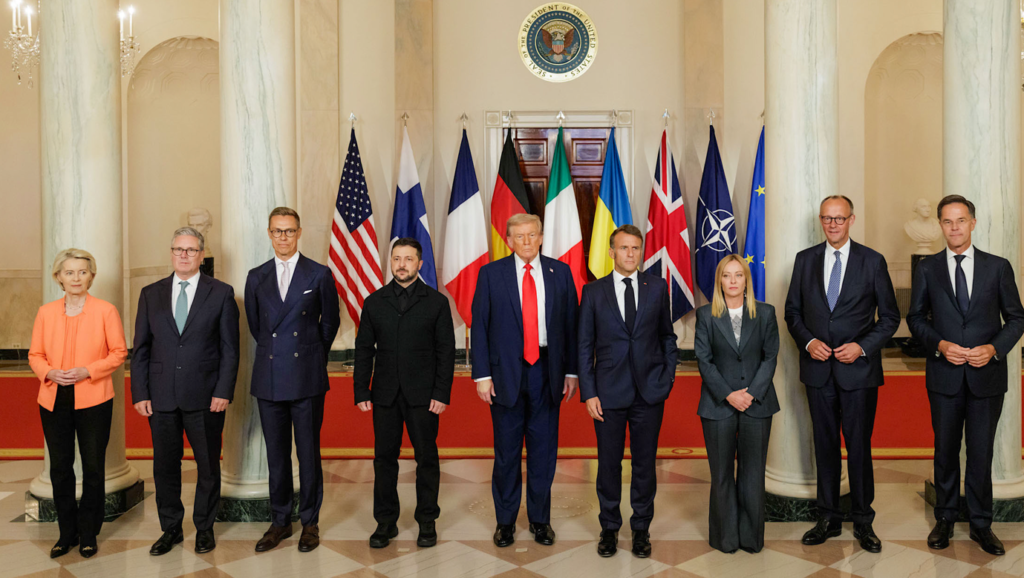
The Washington gathering was a real who’s who of European power. Ukrainian President Zelensky arrived to meet Trump, but he wasn’t alone. He was flanked by basically everyone: Germany’s Chancellor Merz, the UK’s Keir Starmer, France’s Macron, Italy’s Meloni, and of course, Finland’s Stubb. Even NATO Secretary General, Mark Rutte and the EU Commission President, Ursula von der Leyen turned up to show a united front, all standing firmly behind Ukraine.
Alexander Stubb, who got a fair bit of praise from Trump himself during the whole thing, explained why being in the room matters so much for a country like his. ‘For a country like Finland, it is important to be involved in these kinds of discussions and to have influence. We are a small country, but we share a border with Russia, and Ukraine’s perspective is relevant,’ he said. On what America might actually promise, Stubb was a bit more evasive. He said the officials would now start the technical work but that no proper decisions have been taken yet. ‘We spoke about different options, but President Trump will talk about those later,’ he mentioned. He did confirm one of the more dramatic moments – that Trump’s call to Putin in the middle of it all was actually agreed on by everyone beforehand. ‘President Trump thought it would be a good idea to explain the situation and propose a bilateral meeting between Putin and Zelensky. Of course, we supported this,’ Stubb said. But ever the realist, he added a necessary dose of caution, noting that ‘it is worth remembering that Putin is rarely to be trusted’.
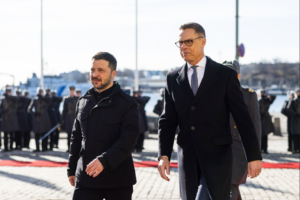
However, he’s hoping to see some real movement on these security guarantees within a fairly short time. ‘This would be the first time the United States committed to security guarantees for Ukraine. We are cautiously hopeful – but it is not yet time to start drafting peace papers’.
He also had to clear up a bit of a fuss over his earlier comments where he’d compared Ukraine’s situation to Finland’s back in 1944, when they had to cede territory. ‘Of course I did not mean that. The situation in 1944 was very different. Finland was alone, we had no options. We must ensure Ukraine’s sovereignty and its territorial integrity in the long term.’
Believe it or not, Stubb even reckons a round of golf he had with Trump back in March actually helped shape the American president’s attitude towards Putin. ‘I see Trump’s focus on solutions. And the most important thing is that the process continues – that we build a path to peace, and that Ukraine and President Zelensky are part of it.’
Back home, Prime Minister Petteri Orpo called it a “significant evening,” but sounded a note of pure Finnish realism. ‘The result moves us forward. As a realist, I want to emphasise this is only if Russia shows it is ready for peace. Now we will see whether Putin is serious about this, whether he wants peace’.
Here’s an interesting bit: according to some sources, Finland is prepared to chip in on those security promises, as long as the US is leading the charge.. That could even mean sending troops if a ceasefire begins. It’s a big step – until now, Finland’s been happy to let others handle the military side, being ever mindful of that 1,300-kilometer border with Russia it now has to protect as a NATO member. But typical of Stubb, he was keen to reiterate that while everyone’s talking about it, no decisions on what anyone will actually do have been made just yet.
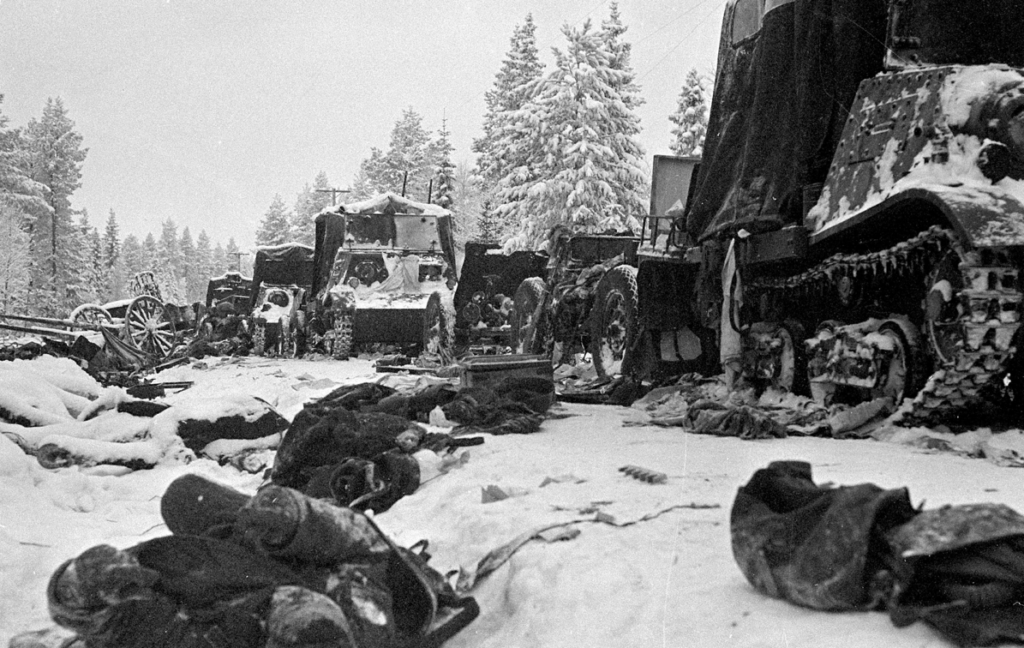
| A Legacy of Survival
This moment in Washington didn’t just happen overnight. Its roots stretch back over eighty years, deep into a much more painful past. The term “Finlandisation” is thrown around freely these days in modern discourse and in journalistic articles, but its true meaning, its real weight, is etched right into the Finnish soul. It was never a policy of choice; it was a strategy of pure survival, born from the ashes of the Winter War of 1939-40.
When the Soviet army just rolled in, the world expected Finland to fall in a matter of weeks. But they didn’t. The Finns, hopelessly outnumbered and outgunned, fought with a legendary, stoic ferocity that absolutely captured the world’s imagination. They used the frozen terrain to their absolute advantage, moving like ghosts in white camouflage, to become a nightmare for the invaders. In the end, they had to cede a brutal amount of territory in the Moscow Peace Treaty of 1940, but they achieved something extraordinary: they preserved their sovereignty and independence against a seemingly unstoppable force. That struggle was the real birth of the modern Finnish identity – proud, resilient, and under no illusions whatsoever about the nature of the neighbour next door.
Looking back, the Cold War was a masterclass in delicate, nerve-wracking diplomacy for Finland. Their neutrality wasn’t some moral choice; it was a non-negotiable necessity for survival. It meant performing a constant tightrope walk: building a robust Western democracy and market economy, while constantly reassuring the Soviet Union that it posed no threat.
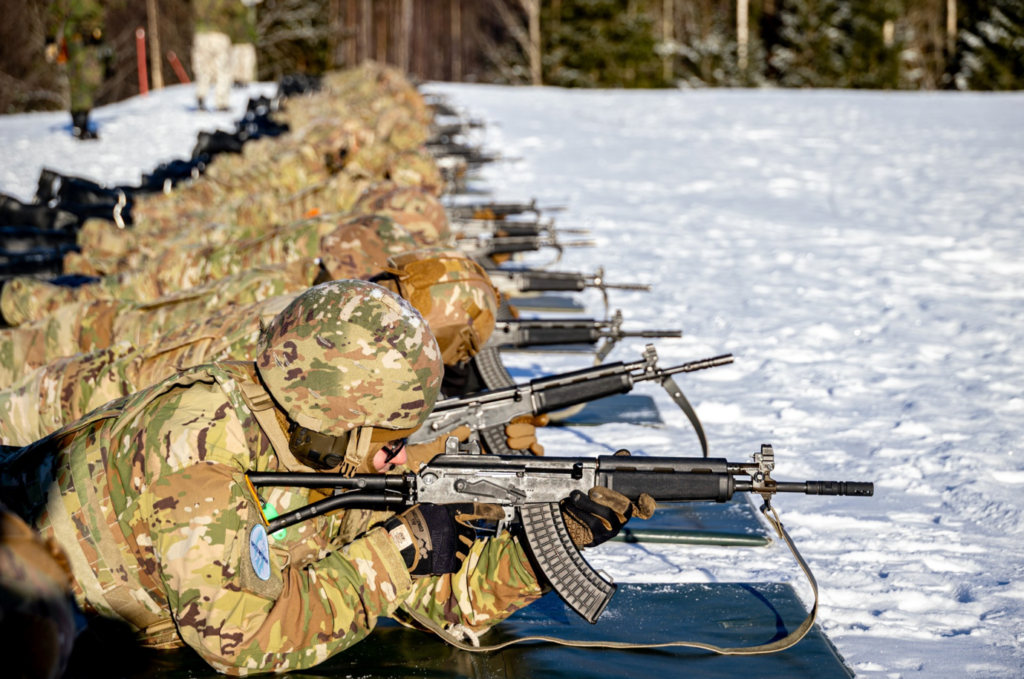
This meant carefully softening their foreign policy statements and avoiding any overt criticism of Moscow. They were walking a diplomatic tightrope that few other countries could even understand. To outsiders, it often looked like weak appeasement. But on the inside, everyone knew it was just cold, hard realpolitik—a necessary game of survival. And the entire time, under the surface, the Finns were preparing.
Every Finnish man does compulsory military service, and the country still maintains this vast, incredibly well-trained reserve force. People don’t always realise that their artillery corps was, and frankly still is, one of the most effective in the whole of Europe. The entire national doctrine was built around this concept of comprehensive security. It meant every single level of society, from the top of government down to civil servants and the general public, was acutely aware of the potential threat and was prepared to respond. That’s the key thing – they weren’t neutral out of weakness, not at all. They were neutral because, for them, it was the only possible way to be strong. It was the only way to survive.
| February 24, 2022: The Day the Narrative Changed
For decades, Finland had built a careful, stable balance with its powerful neighbour, but that entire strategy evaporated on the morning of February 24, 2022. Vladimir Putin’s full-scale invasion of Ukraine sent a seismic shock through Helsinki, forcing the country to recalculate every single one of its strategic assumptions. For the Finnish people and their leaders, it was a horrifying real-time lesson. It showed them that the Russia they had so cautiously managed was capable of a raw, revanchist imperialism many believed was gone for good. Suddenly, the core principle of their security – that a strong national defence was enough to deter an attack – seemed terrifyingly fragile. If Russia was willing to launch such a bloody and costly war against Ukraine, a country with a large military and vast territory, then what real protection did Finland have?
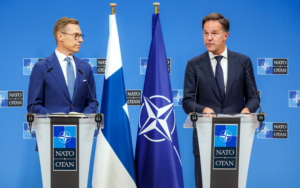
The historical parallels were absolutely chilling for everyone. And public opinion, which had been almost perfectly split on the whole NATO question for years, it just swung towards membership with a speed that really stunned people. But this was a decisive, completely rational, and democratic response. This wasn’t some sort of shift towards the West; Finland was always of the West, culturally, politically, just about everything. This was a shift from going it alone to finally joining the team.
| From Neutrality to NATO’S Northern Pillar
The whole accession process itself was just stunningly fast, a real testament to both Finland’s impeccable preparedness and the urgency that all the existing NATO members felt. And then in April of 2023, they raised Finland’s blue and white cross flag up there in Brussels. The change was both instant and profound; NATO’s border with Russia basically doubled, just like that – overnight. The alliance gained a military that isn’t just capable, but is exceptionally so.
Right, so the Finnish military is designed for one primary purpose, full stop: to defend Finnish territory against a massive invasion from the east. What that means is they possess this deep, ingrained expertise in the very sort of warfare you’d expect in the region – Arctic combat, winter survival, large-scale manoeuvres in dense forested terrain, and some of the most sophisticated and numerous artillery systems anywhere on the continent. Thanks to their reserve system, they can mobilise a huge proportion of their entire population at a moment’s notice. They are, in NATO parlance, the ultimate “security provider”; from day one, they didn’t need any breaking-in period.
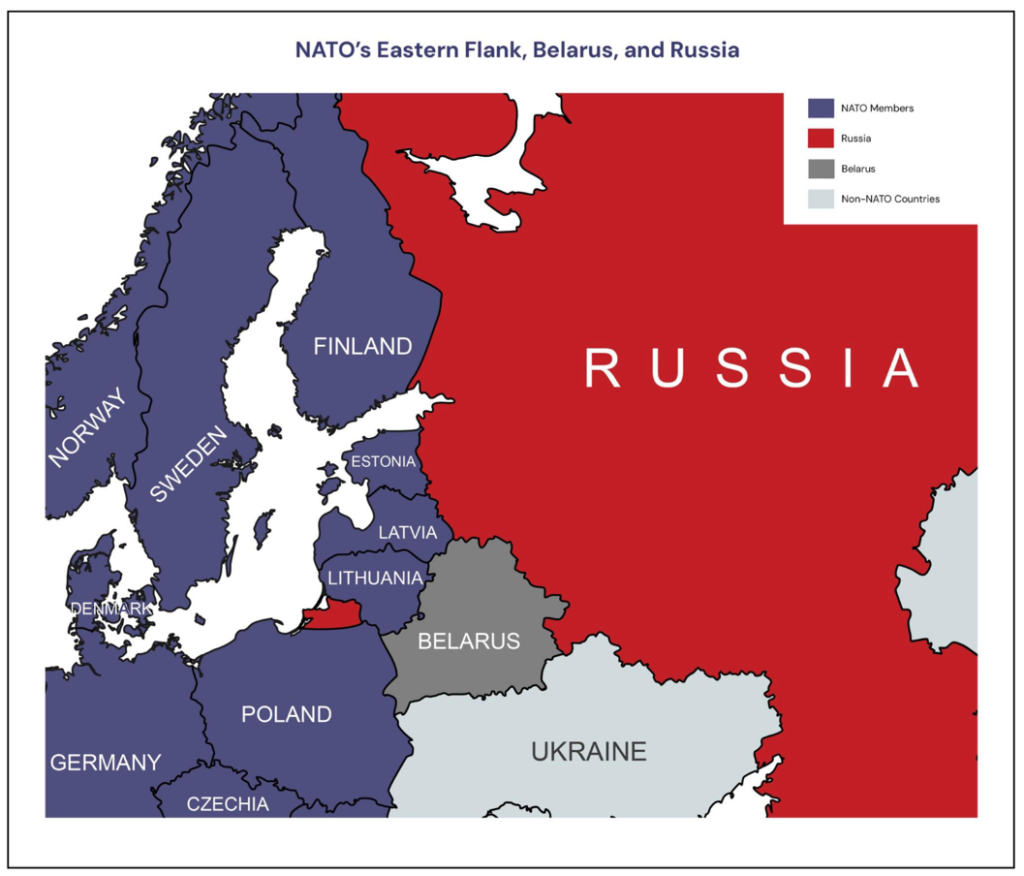
Finland’s new position within NATO is actually fascinating to watch now. There doesn’t seem to be any of that usual newcomer anxiety for nervously finding its feet. Instead, there’s this quiet confidence and a real willingness to step up and lead, especially on matters concerning the Baltic Sea and the increasingly important Arctic. And with Finland’s massive 1,300-kilometre coastline there, plus Sweden having also joined the alliance, the Baltic is basically becoming what some analysts are calling a “NATO lake”. It’s a change that just completely upends the security situation for the Baltic states and really causes a headache for Russia’s critical Baltic Fleet down in Kaliningrad.
Finland has this almost intimate understanding of Russian military doctrine, all its hybrid tactics and its political thinking. And it’s not just some theoretical, academic knowledge—it’s a really nuanced, street-smart kind of intelligence, hard-earned from centuries of wary coexistence and just relentless observation. The country’s already deeply integrated into the whole NATO defence planning process as well. Their forces are turning up to exercises now not as guests or observers, but as core, vital participants from the off.
| The Unburdening of a Nation
It’s funny, but the psychological change might matter just as much as all the new military hardware. For generations, Finns carried this immense weight of existential vigilance entirely on their own. Now, suddenly, that burden is shared. It means that famous Finnish sisu – that deep-down grit – isn’t just for Finland’s survival anymore. It’s become a key part of defending the whole alliance, which is a pretty profound thought when you stop to consider it.
It was from this position of newfound strength and clarity that President Alexander Stubb travelled to Washington in early March of 2024. His visit was far more than just a simple introductory meet-and-greet; it was a real demonstration of Finland’s new role and a really forceful contribution to the whole – sometimes a bit stuck – transatlantic security debate. And Stubb, being a former Prime Minister and a properly committed Atlanticist, was the perfect person to deliver that message. His speech and his comments to the press were really notable for their bluntness, this clever historical framing he used, and this clear and unambiguous call to action for everyone listening.
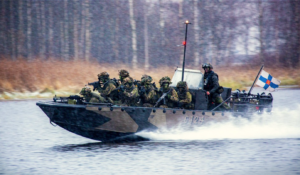
He began by placing Finland’s story within the broader Western narrative, which was smart. He didn’t just talk about 2022; he reached all the way back to the Winter War, reminding his audience of the time when Finland stood completely alone against tyranny, a moment that you could see resonated deeply with an American audience familiar with their own history of rooting for the underdog. This was a powerful rhetorical move; it established Finland not as some needy supplicant but as a historical ally of principle, long before the formal paperwork was ever signed. He then seamlessly connected this to the present struggle in Ukraine, drawing a direct line from the Finnish fight for survival in the 1940s right to the Ukrainian fight for survival today. For Stubb, and for Finland itself, this isn’t abstract geopolitics; it is personal, it’s historical, and it is completely existential…they feel it in their bones.
The core of his message was this really robust, unflinching call for sustained – and let’s be honest, increased – support for Ukraine. He framed it not as some sort of charity, but as a straight-up strategic imperative, for everyone’s security. He argued, pretty convincingly, that the cheapest and most effective way to guarantee the long-term security of the entire West is to just ensure a Ukrainian victory, full stop. He also issued a stark warning against the fatigue and the political dithering that’s sometimes crept into the Western response. His point was that Putin’s Russia only truly understands strength and resolve; it simply doesn’t respond to anything else.
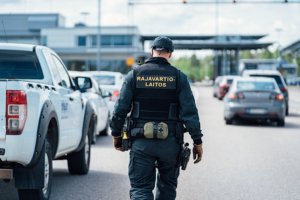
His language was stark at times, speaking of a fundamental battle between democracy and autocracy, and placing Finland firmly and proudly on the side of the former, no question about it. He made it incredibly clear that for Finland, there can be no comfortable peace that simply rewards Russian aggression with stolen Ukrainian land; a just peace has to mean a free and sovereign Ukraine, fully capable of defending itself in the future against anything.
And crucially—this is the key bit really—Stubb’s performance in Washington was a total masterclass in how a smaller nation can actually wield serious influence. He didn’t come asking for reassurance; he came to provide it, which is such a powerful twist. That phrase he kept using, that Finland is a “security provider, not a security consumer,” was a direct and pretty brilliant signal to American lawmakers, you know, the ones who are always going on about burden-sharing. And he could back it up. He could just point to Finland’s defence spending, which is consistently above that NATO 2% target, its modernised military, and the fact it was ready to go from day one. He was basically selling Finland as a sound investment and a totally reliable ally – which let’s be honest, isn’t a very hard sell. He also spoke with real authority on the new strategic map, explaining how a Nordic-Baltic region with Finland and Sweden inside NATO creates this solid, defensible bloc that completely messes up the Kremlin’s plans, whatever they were.
The aftermath of this huge shift is a new, stable but incredibly tense reality on the ground. Finland is now unquestionably on the front line of what many are calling a new Cold War, though it feels a bit warmer sometimes. Russian officials have menacing statements about “countermeasures,” which will likely mean further militarisation of their side of the border, more aggressive hybrid operations like cyberattacks and maybe instrumentalised migration, and a constant barrage of disinformation aimed at causing division. But the fundamental equation has changed entirely, and that’s what matters. Where once a provocation against Finland would have been a serious bilateral issue, it is now an Article 5 issue—an attack on one is an attack on all, no questions asked. That is the ultimate deterrent, and everyone knows it.
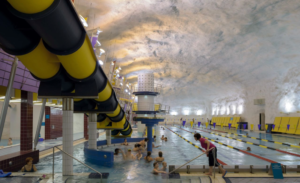
Helsinki has around 5,500 underground shelters, capable of protecting approximately 900,000 people—more than the city’s entire population. Some of these are small, private bunkers in apartment buildings, while others are massive, multi-functional spaces hidden beneath the streets
Walking through Helsinki today, the change isn’t visible in grand monuments or a sudden militarisation of society. The Finns are far too pragmatic for that kind of showy nonsense. The change is in the atmosphere, it’s in this subtle, almost collective sigh of relief. The preparedness remains, of course – the civil defence drills, the vast network of shelters tucked away under the city, the well-maintained reserves. But the profound, solitary responsibility is gone, replaced by this sobering but ultimately reassuring knowledge of being part of the most powerful defensive alliance in history.
Finland’s journey into NATO is basically the story of a nation that took a long, hard look at its own history, assessed the modern threat with utterly clear eyes, and made a calculated, decisive choice to finally secure its future. And in doing so, it hasn’t just guaranteed its own freedom – it’s immensely strengthened the defences of the entire democratic world.
And the real irony – the truly historic bit – is that Vladimir Putin, in his reckless attempt to rebuild a lost empire, has only succeeded in uniting all his neighbours. He’s managed to push his greatest fear right up to his own doorstep, and it’s now manned by some of the most determined and capable soldiers you could find anywhere. It’s a blunder of the most profound, and for him, incredibly costly kind.

